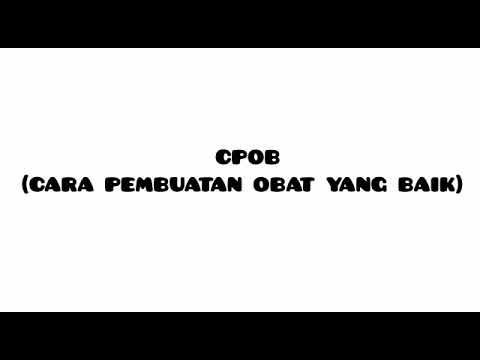Audit Snapshot: Quality Management Standards
Summary
TLDRThis video provides an insightful overview of the transition from traditional quality control standards to modern quality management frameworks in auditing. The focus shifts from PSQC 1 and PSA 220 to the new ISQM 1 and ISQM 2 standards, emphasizing leadership responsibilities, ethical requirements, and risk management. Key additions include a formal risk assessment process and enhanced information and communication systems. The video also delves into engagement quality reviews and the role of engagement quality control reviewers. With a practical focus on implementation, this snapshot highlights the evolving nature of quality management in audit firms.
Takeaways
- 😀 The shift from PS QC to PSQM reflects a change from quality control to quality management, broadening the focus within firms to manage quality across all engagements.
- 😀 PSQM 1 is the Philippine counterpart of ISQM 1 and governs quality management for firms offering both assurance and non-assurance services.
- 😀 PSQM 2 is a new standard dedicated to engagement quality reviews (EQRs), replacing the previous provisions under PS QC1, and is particularly crucial for audits of listed entities.
- 😀 The revised PSA 220 now incorporates quality management principles but still specifically applies to audits of financial statements.
- 😀 PSQM 1 introduces a risk assessment process where firms must identify, evaluate, and respond to quality risks, similar to a risk-based audit approach.
- 😀 Leadership responsibilities in quality management lie with the managing board at the firm level, and with the engagement partner at the audit level, who oversees the implementation of quality procedures.
- 😀 Ethical requirements under PSQM align with the Code of Ethics, emphasizing integrity, competence, and independence, with specific reference to independence threats in audit engagements.
- 😀 The rotation and cooling-off periods for key audit partners (e.g., lead audit partner, engagement quality control reviewer) are mandated to mitigate independence risks, with specific timeframes (7 years on, 5/3/2 years off).
- 😀 The monitoring component involves ongoing and periodic reviews of the quality management system, with inspections of completed engagements to ensure the effectiveness of controls.
- 😀 PSQM 1 replaces the 'Human Resources' component with 'Resources,' now including intellectual, technological, and service provider resources as part of quality management.
- 😀 Information and communication systems are a new addition, requiring firms to have procedures in place for generating and communicating quality management-related information both internally and externally.
Q & A
What are the key quality management standards discussed in the script?
-The key quality management standards discussed are ISQM 1, ISQM 2, and ISA 220, with a focus on the evolution from PSQC (Philippine Standard on Quality Control) to PSQM standards.
How has the name change from PSQC to PSQM impacted the standards?
-The change from PSQC to PSQM marks a shift from focusing on 'quality control' to 'quality management', reflecting a broader and more comprehensive approach to managing quality across firms and engagements.
What is the difference between PSQC 1 and PSA 220?
-PSQC 1 applied to all firms offering assurance and related services, covering firm-level quality controls. PSA 220 specifically focused on audits of financial statements, applying at the engagement level.
What are the main components of the previous PSQC 1 and how are they remembered?
-The main components of PSQC 1 were leadership responsibilities, ethical requirements, acceptance and continuance, human resources, engagement performance, and monitoring. These were remembered using the mnemonic 'LEEM' or 'HEAL ME'.
What are the new components introduced in PSQM 1?
-PSQM 1 introduces two new components: the firm's 'risk assessment process' and 'information and communication systems', which align more with internal control frameworks.
What is the role of leadership in quality management, according to the standards?
-Leadership is responsible for setting the tone at the top and ensuring the firm's commitment to quality. At the engagement level, the engagement partner holds ultimate responsibility, while the engagement team is responsible for implementation.
How do ethical requirements relate to independence in audit engagements?
-Ethical requirements align with the code of ethics, emphasizing integrity, objectivity, and professional competence. For audit engagements, specific independence requirements are outlined, including the rotation of key audit engagement partners to mitigate threats like the familiarity threat.
What is the purpose of the engagement quality control review (EQCR)?
-The EQCR ensures that significant judgments and conclusions reached by the engagement team are reviewed before the audit report is issued. It is required for audits of listed entities, and other engagements may be reviewed at the firm's discretion.
What is the significance of the 'cooling off period' for audit partners?
-The cooling off period prevents independence threats, especially the familiarity threat. Key audit engagement partners must rotate after 7 years, with a cooling off period of 5 years for lead partners, 3 years for quality control reviewers, and 2 years for other key partners.
How does the concept of 'monitoring and remediation' apply in quality management?
-Monitoring ensures the ongoing effectiveness of the quality management system. This can be done through periodic inspections of completed engagements, and remediation is required if deficiencies in the system are identified during monitoring.
Outlines

Этот раздел доступен только подписчикам платных тарифов. Пожалуйста, перейдите на платный тариф для доступа.
Перейти на платный тарифMindmap

Этот раздел доступен только подписчикам платных тарифов. Пожалуйста, перейдите на платный тариф для доступа.
Перейти на платный тарифKeywords

Этот раздел доступен только подписчикам платных тарифов. Пожалуйста, перейдите на платный тариф для доступа.
Перейти на платный тарифHighlights

Этот раздел доступен только подписчикам платных тарифов. Пожалуйста, перейдите на платный тариф для доступа.
Перейти на платный тарифTranscripts

Этот раздел доступен только подписчикам платных тарифов. Пожалуйста, перейдите на платный тариф для доступа.
Перейти на платный тариф5.0 / 5 (0 votes)






